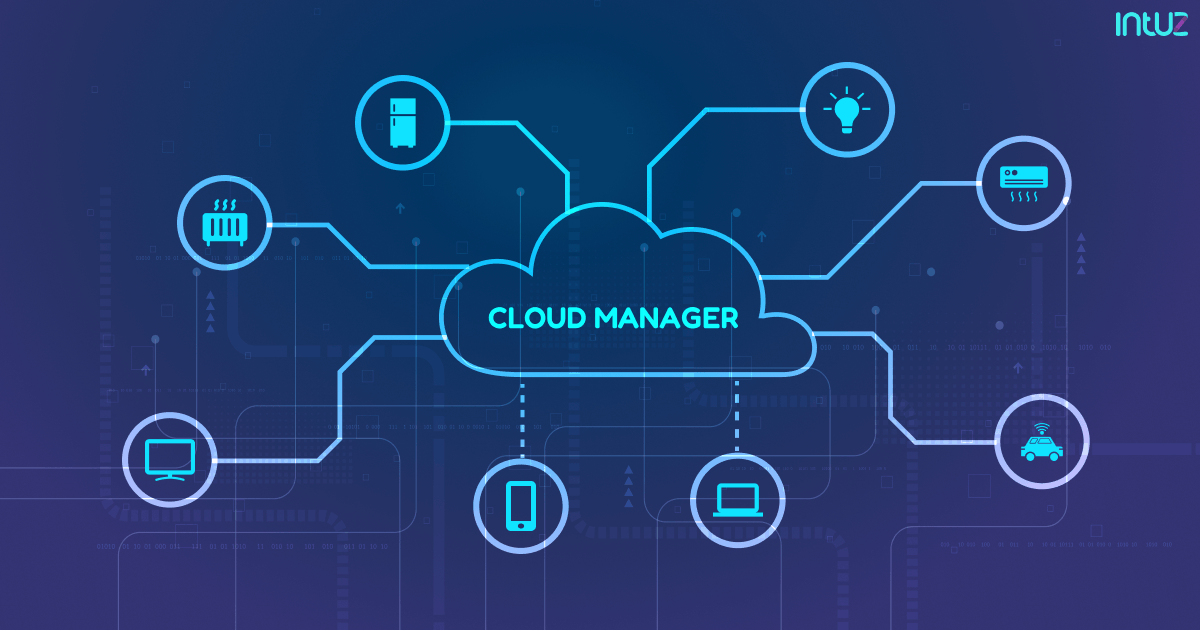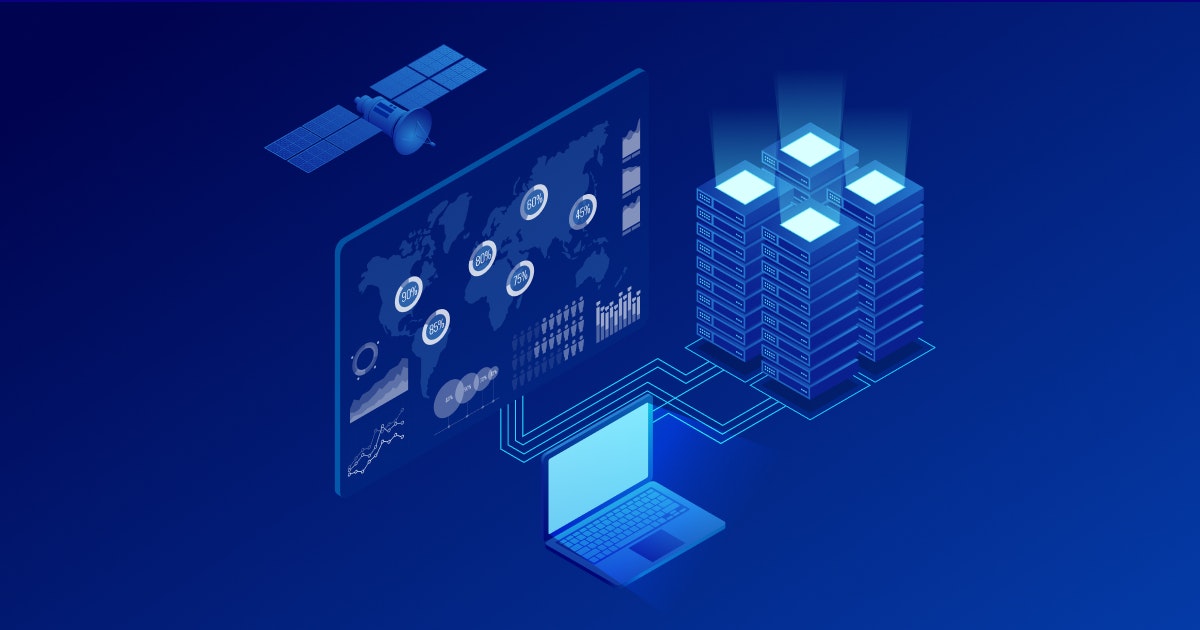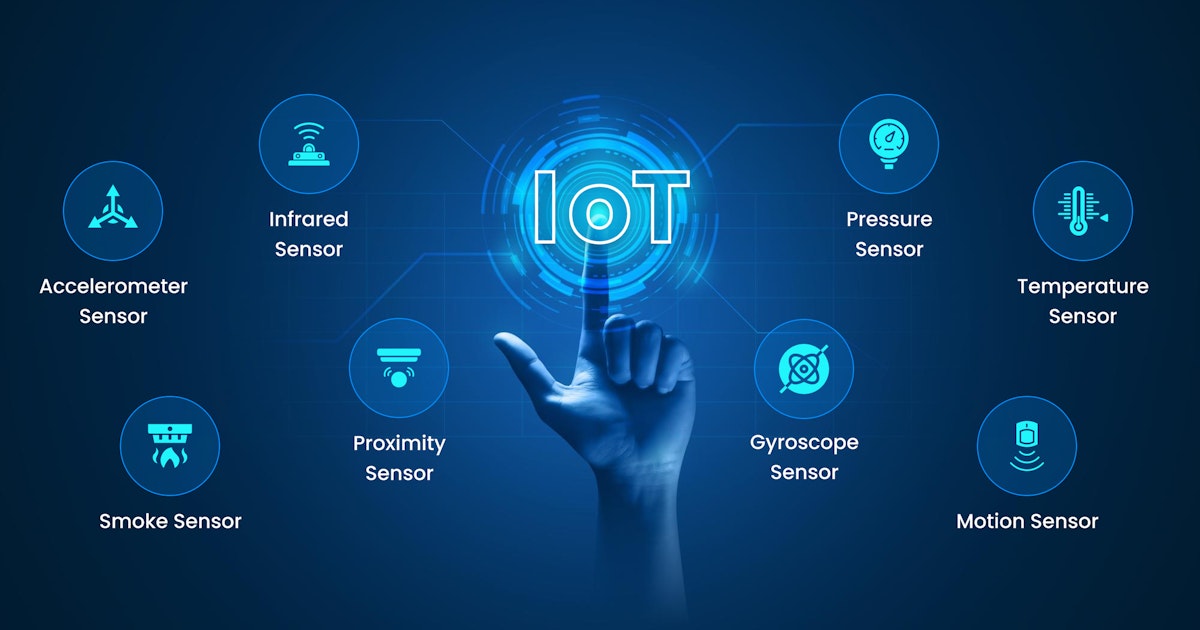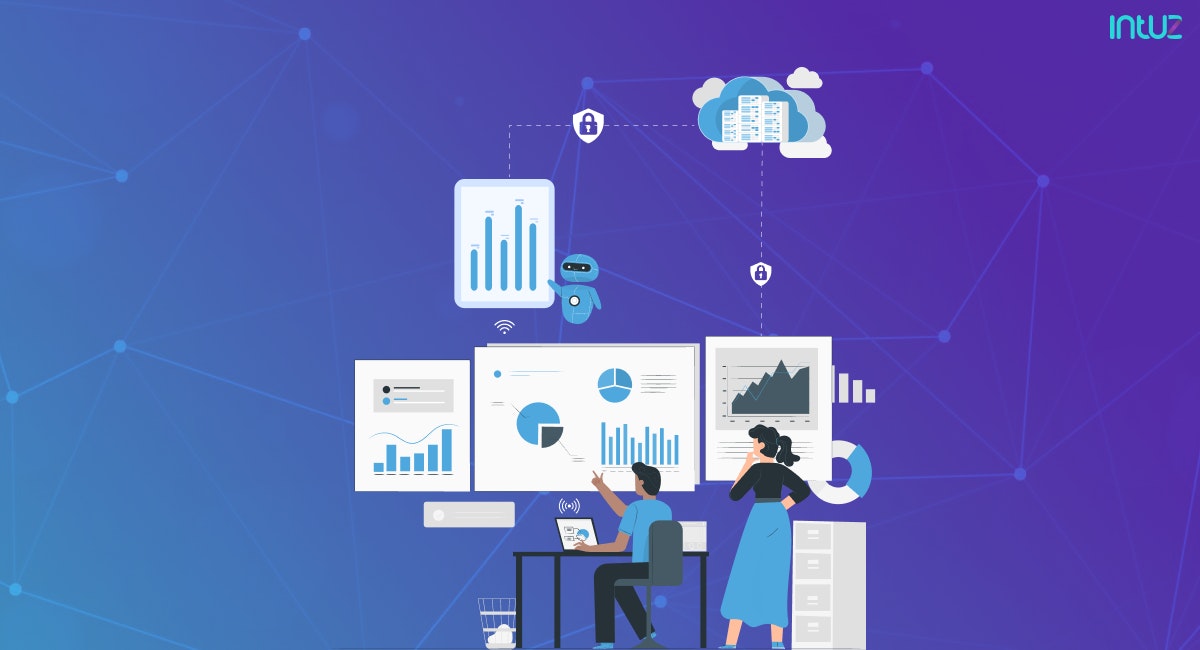Table of Content
Imagine a world where you could remotely monitor and control the activities of every machine from a single place. It does not surprise you, right? Well, it should not.
The Internet of Things (IoT) and cloud computing are two technologies that play a crucial role in bringing the convenience of remote management into our daily lives. Their usage has grown exponentially because they simplify critical tasks across industries.
IoT enables better use of resources and assets, improved customer service and retention, and cost-effective operations. On the other hand, cloud computing (CC) ensures business continuity, the flexibility of work practices, and access to automatic updates.
IoT and cloud computing together provide access to unlimited capabilities to people, processes, and systems through the Cloud of Things (CoT). In this article, we will learn everything there is to know about COT and how it influences the IoT ecosystem. But first, let us sort out the basics:
What is the Cloud of Things?: An introduction
Simply put, Cloud of Things or COT refers to the integration of IoT and CC. It is a high-performance cloud-based IoT app platform that enables you to monitor remotely, control, and manage IoT-enabled devices.
COT simplifies and streamlines data collection, transmission, computation, storage, and analytics. You can use CoT to connect IoT-powered devices or machines while being able to access information in real-time without any hassle.
To keep up with the ever-growing number of IoT-enabled devices and data generation, there is a need for a more advanced solution that can store information locally without fail.
CoT is a revolutionary technology that starts with integrating the IoT and cloud computing for cloud application development capable of processing data. It provides a new business model with increased efficiency.
COT enables businesses to bolster their operations through automation while these significant advances allow for more smart applications to be developed.
Over time, the technology has found applicability in industries such as healthcare, energy, logistics, and manufacturing. It enables the smart surveillance of industrial facilities, improves functionalities in smart homes, and helps manage smart cities and environmental monitoring.
The architecture of CoT
Different cloud computing models include Software as a Service (SaaS), Platform as a Service (PaaS), and Infrastructure as a Service (IaaS), which are responsible for the infrastructure that allows users to build, create, store, and use data or applications in the cloud.
CoT models include apps that deliver Sensing as a Service, Database as a Service, Big Data Analytics as a Service, Identity and Policy Management as a Service, Data as a Service, Video Monitoring as a Service, and Sensor as a Service.
These models are interconnected through various networked environments. The computing framework is an N-tier hierarchical structure with distinct layers. At the bottom of this structure are all IoT devices such as sensors, actuators, and smart devices such as phones or tablets.
These communicate wirelessly over long distances and can be accessed remotely via networks such as 5G or 4th generation mobile telephony systems.
Top applications and use cases of CoT
The CoT paradigm has caused a seismic shift and many significant changes in the IT industry. One such change has been the appearance of new sets of smart applications that can seriously transform and revolutionize our daily lives.
The list includes Machine-to-Machine (M2M) communications, an emerging technology where machines communicate directly with each other without relying on human intervention. With that thought, here are the top applications of CoT:
Top applications and use cases of CoT
1. Healthcare
The current trend of increasing health ailments has led to a shortage of hospital resources and increased our reliance on home healthcare. For instance, the medical checking service can be moved to an individual's home with connected devices and advanced health technology.
The arrangement allows for more work on designing algorithms and models so that data becomes usable in decision-making activities such as diagnosing health problems or preparing treatment plans.
CoT plays an essential role in making the applications executable without needing high-powered servers. That is the beauty of this technology.
2. Smart cities
The population explosion in many cities across the globe leads to a scarcity of natural resources. Environmental concerns are increasing, and there is a constant need for making public services and infrastructure accessible to all individuals.
CoT supports new generation services and applications to make the smart city experience interactive and effective. It helps tackle everyday problems such as public safety, transportation, tourism, and urban consumption.
3. Smart homes
Convenience and security are the building blocks of the smart home concept. Users mainly leverage their home network environment for monitoring and controlling smart devices and objects in their homes.
CoT applications ease the adoption of heterogeneous embedded devices, thereby enabling automation of everyday activities.
These smart home applications include sensors, actuators, and local networks that connect to the internet, allowing real-time data gathering, processing, and sharing.
Deploying smart metering, heating, lighting, and air conditioning functions results in intelligent energy consumption management.
4. Smart surveillance
Intelligent video surveillance systems can deliver video streams to a large number of user devices connected to the internet. These solutions require cloud-based technologies such as Video Surveillance as Services (VSaaS) to effectively store, manage and process crucial information to ensure the security of a facility. CoT helps with the requirements of such applications by processing complex data to provide analytics.
5. Smart energy and smart grid
Modern ICT (Information and Communications Technologies) offers monitoring and automation tools for enhancing the performance of smart grid and smart energy systems. Deploying these in industrial and other applications allows efficient management of energy needs.
CoT helps in optimal energy distribution management based on consumption in heterogeneous environments. It uses sensing nodes for data collection and analyzes the information collected by various sources to identify the most effective methods for utilizing resources intelligently.
6. Smart mobility
The rise of shared mobility has disrupted the automotive industry. Consumers can now choose from a variety of options for their transportation needs - thanks to IoT of Cloud of Things. These include autonomous fleets and car electrification.
Some of the options help people save money while being more environmentally sustainable. With the emergence of smart automobiles, Mobility as a Service (MaaS) has become a popular offering that helps in saving costs.
CoT enables digital transformation by converting the transportation systems and automobile services into Intelligent Transportation Systems (ITS).
7. Smart logistics
There has been significant growth in the eCommerce industry, leading to a rise in demand for better logistic services. With the introduction of CoT in the said sector, business practices have drastically changed.
You see, it is now much easier to manage flows from a departure point and track goods throughout their journey.
Conventional systems evolve into sophisticated ones that can automatically deal with complexities along the route, such as weather changes or traffic diversions.
CoT's real-time data sharing ability also helps fulfill any changes demanded by customers without pushing on the profit margins.
8. Environmental monitoring
The rising weather fluctuations and natural disasters can be addressed by linking sensors and actuators to weather-sensitive zones such as industrial facilities, oil rigs, and farms.
Deploying the devices helps improve results by offering an optimal environment and facilitating real-time information-sharing with the stakeholders responsible for monitoring it. CoT can help in the transmission of high-speed information through environment monitoring systems.
Common applications for environmental monitoring include water quality or level monitors, soil humidity monitoring solutions, pollution source detectors, air quality assessment systems, and smoke warning systems.
CoT platforms you should know about
The IoT cloud is a vast network that supports IoT devices and applications. Some of the top CoT platforms include Thingworx 8 IoT Platform, Google Cloud's IoT Platform, OpenIoT, AWS IoT Platform, Salesforce IoT Cloud, Cisco IoT Cloud Connect, Thingspeak IoT Platform, Microsoft Azure IoT Suite, GE Predix IoT Platform, IBM Watson IoT Platform, and SENSEi.
Common challenges in the wide-scale adoption of CoT
There is no surprise that cloud technology influences business development greatly. However, if you are not aware of the nitty-gritties of CoT, that can cause potential harm to how you run things at your end. Here are the everyday challenges of adopting CoT you must know:
Common challenges in the wide-scale adoption of CoT
1. Data security
Privacy and data integrity are among the main concerns of CoT. IoT data involves the personal information of users, and it must be protected throughout the transmissions across a network and even on the cloud.
Protection of user privacy and manufacturer's IP is imperative to prevent malicious activities. CoT security threats involve the detection and blocking of unauthorized users. It requires strict authorization policies and rules to ensure data is available only to users given access.
2. Heterogeneity
The complicated nature of the ever-changing array of IoT devices, operating systems, and cloud services is a challenge in deploying CoT. These changes can make it challenging to integrate resources given their customization by the cloud service providers.
Specific proprietary interfaces need to be integrated, depending on different third-party companies providing them. Handling multiple vendor solutions is not easy, so you need to have proper resources to enable that.
3. Performance
CoT applications require specific Quality of Service (QoS) protocols to perform efficiently. Tasks such as data transfer, communication, computation, and storage require good network performance. This can be a challenge as network bandwidth cannot be upgraded to compete with the computation and storage evolution of the cloud.
4. Physical threats
The three main categories of physical threats to a CoT solution are internal, external, and human-based. These may be due to accidental mistakes or intentional acts to degrade the functioning of your equipment, resulting in its ultimate disruption from the use by customers.
The incidents include theft, node damage, as well as errors, and other natural causes due to malfunctions caused by earthquakes or other structural damages.
The three-step implementation of CoT
Establishing a successful CoT platform for your business goes beyond general IT deployment knowledge. Understanding how cloud computing and IoT can help resolve business pain points will ensure optimal performance of the CoT network. Do not hold your breath. Implementation of CoT involves the following three steps:
Three-step implementation of CoT
1. Connect
Businesses that are not prepared for the transition to cloud computing will find themselves losing valuable time and money. The process of moving your data to a cloud server requires careful thought. However, once completed, it can provide enormous benefits in working with information across various devices.
To successfully establish your cloud platform, you will need to develop an implementation plan. It involves outlining the intended use of CoT and the availability of resources to support it.
For instance, the ability of the company's internet to run applications from the cloud cannot go unnoticed. It must support the increased bandwidth needed for uninterrupted performance throughout the CoT network.
A recovery or contingency plan should also be prepared to avoid any problems with the current internet connection. It ensures the smooth performance of the network as all Software and applications can be accessed from the cloud server.
A clear roadmap must be prepared with the scope and length of the agreement. It is an essential component of a successful implementation plan, as the right length of implementation will help you realize the benefits and flaws of the deployment.
For instance, ten years may seem too long, but one year is short of analyzing results. The CoT implementation plan must also include communication about the change to employees and stakeholders.
Internal communication is essential to clarify how work will be affected and how the entire process must be adopted for successfully transitioning to CoT. It helps the concerned stakeholders understand the changes being made, their needs, and how to best use the new version of the network.
2. Configure
Once the step for developing a strategic CoT implementation plan is achieved, you must work on the cloud migration process. All IoT devices across the network must be configured to transmit data to the cloud.
It should be equipped with applications to process and store data on cloud servers. Integration tools will make it easier to secure files as they are moved from on-site servers to the cloud or even cloud service migration.
The primary concerns that must be addressed during the process are:
- Application compatibility for the cloud
- Data security by configuring the STS (Security Token Service) options and defining access controls
- Application management with service-level agreements, auditing, application monitoring, and cost management
- Database compatibility by checking the database size and comparing it with the database allowance of your cloud provider
Resolving these concerns before transitioning to CoT is imperative to achieve the desired results for the business.
IoT Operational Technology (OT): Convergence With IT & Key Differences
Learn More3. Operate
Implementation and migration of business processes to CoT networks require lots of time and money. Once the change is done thoroughly, a cloud computing consultant and an IoT expert can help make the setup operational.
They would work on designing and planning a business-specific CoT solution. Once a plan aligned with the project's business goals is finalized, the implementation process is initiated. Upon the successful implementation of the CoT system, it is made operational under the supervision of the system experts.
How CoT influences IoT projects
The IoT objects generate volumes of data that need to be processed and analyzed in the cloud for extracting vital information. This information could be susceptible as many smart devices or applications exchange it.
Therefore, to manage volumes of data, existing cloud architectures need to be migrated to distributed architectures closer to the network edge for optimal energy consumption and privacy.
The CoT networks with distributed architectures enable various devices to stay interconnected. Using the cloud allows for high scalability.
When you have hundreds of thousands of sensors, putting large amounts of computational power on each sensor would be extremely expensive and energy-focused. However, thanks to COT, data can be passed onto the cloud from all sensors and processed in aggregate.
Boost the security of CoT with robust IoT development
IoT applications are growing at a breakneck pace, and so are the connected devices in the IoT ecosystem. These are proportionally generating massive data and are supported by powerful resources for processing it.
But managing the data and ensuring its security is still a challenge. Cloud offers a robust resource that is available on a pay-as-you-go basis. CoT will leverage the services offered by edge computing to avoid cloud issues.
If you are looking to build an IoT app that is safe, scalable, and efficient, Intuz is the best IoT app development company to work with! Our expert IoT developers have worked on various projects in sectors such as oil and gas, manufacturing, and automotive.
Our deep expertise in IoT and related systems empowers us to build connected systems, including cloud applications and edge networks. So, what are you waiting for? Get started with us!




